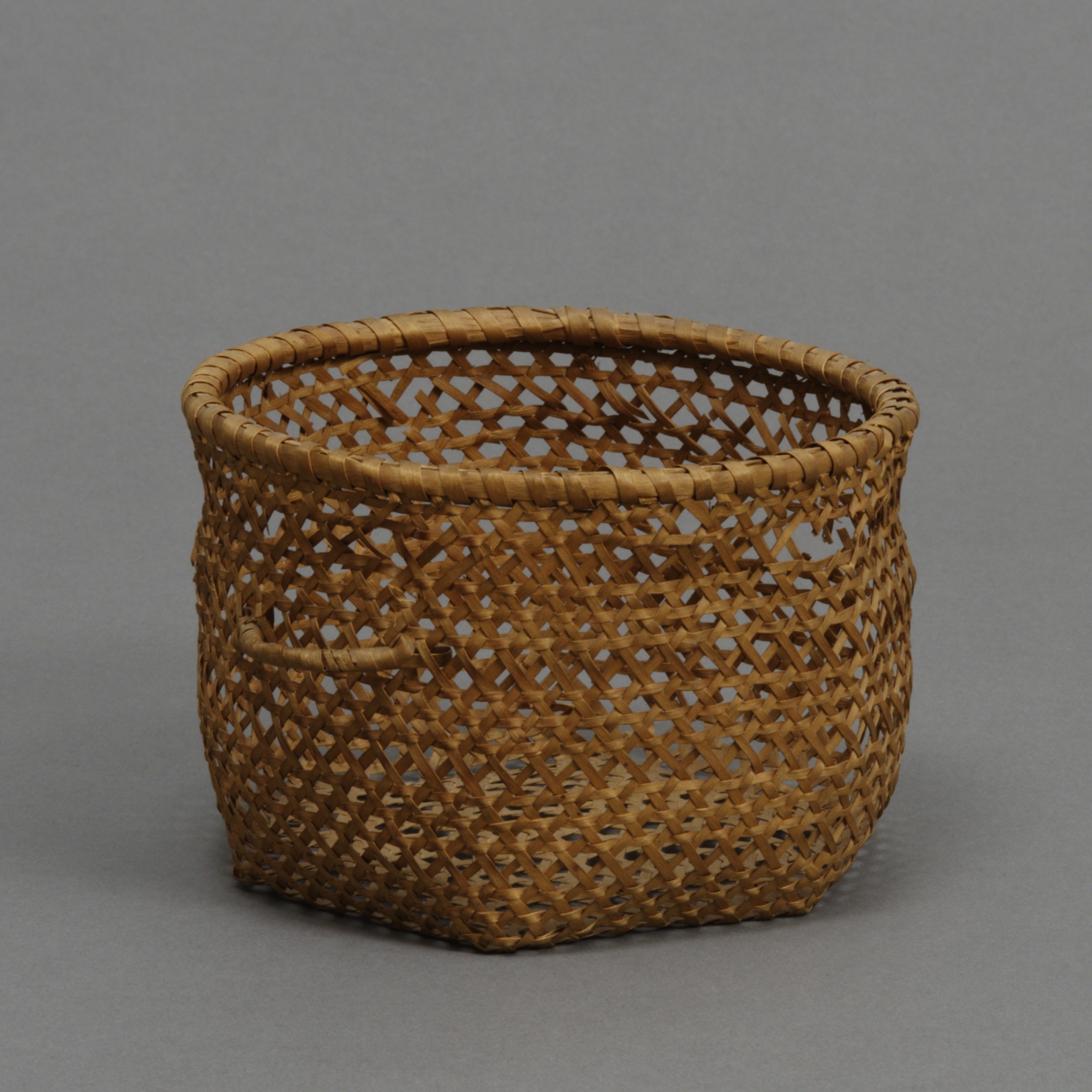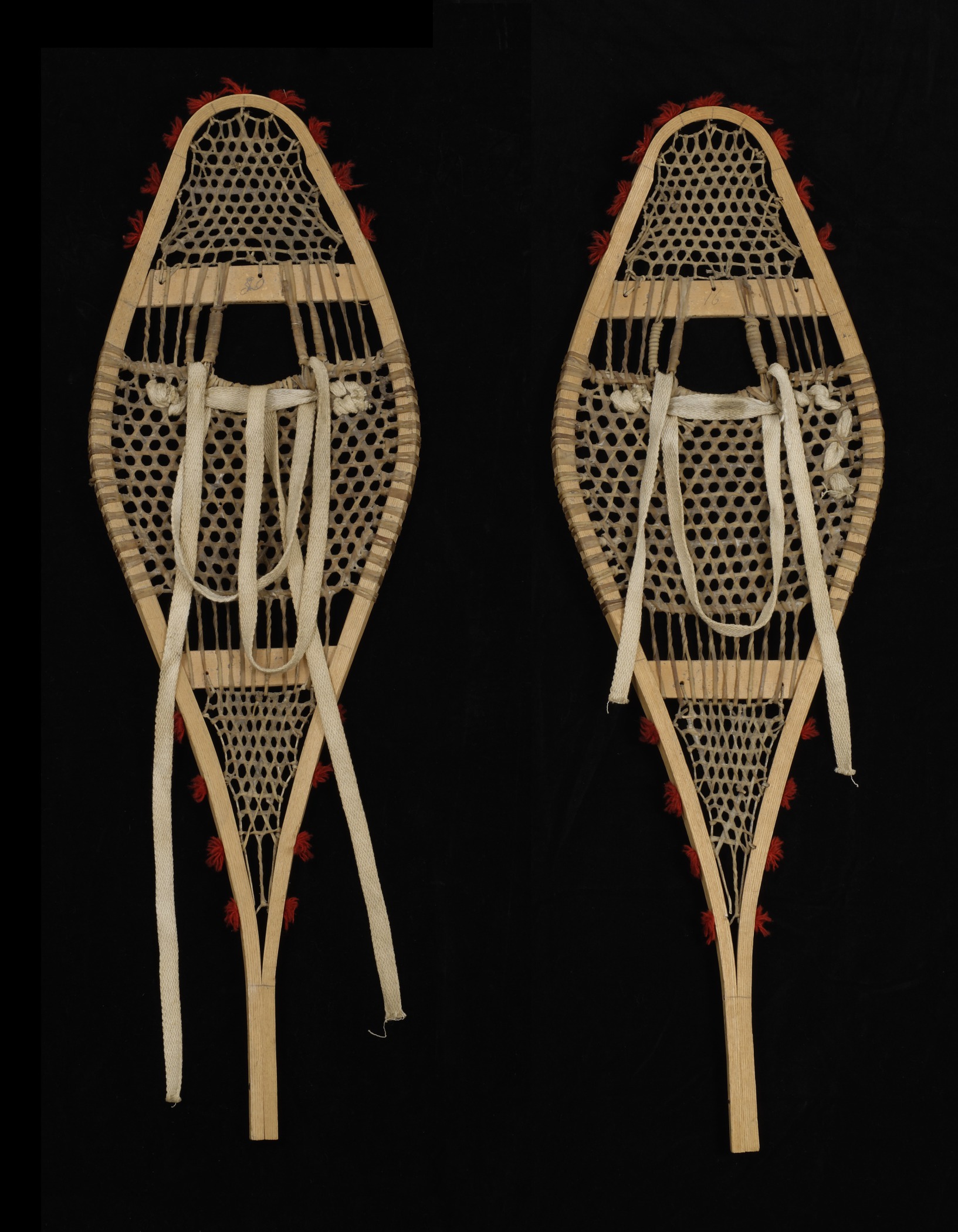Penobscot
Hex-weave basket
- 19th century
- Brown ash
- 3 7/16 × 5 3/16 in.
Hood Museum of Art, Dartmouth College: Gift of Emily W. and George H. Browne; 42.12.7957
visibilityLook & DiscussBaskets, boxes, and bags were once important tools that served many purposes. Storage containers made of birch bark naturally prevented spoilage and insect infestation. Baskets woven with strips of ash wood were used to collect edible plants and berries, as fishing traps, and backpacks to carry heavy loads. Unlike the “fancy” baskets that appear elsewhere on this site, which were largely made for display, these baskets are known as “burden” baskets.
Explore the object
Hex-weave baskets were traditionally used as sieves, or sifting baskets for cornmeal. Women ground dried corn and then poured it into a basket, like this one, with an open weave. The finer cornmeal would fall through the holes while the larger pieces were left to be ground again.
Activity: Matching form & function
There are many burden baskets in the Hood Museum of Art’s collection from the Northeast Woodlands. The shapes and purposes of some burden baskets changed with the arrival of trade items from Europe. See if you can match the following baskets with their purpose. (Click on each image and the corresponding caption to check your answer.)
- Large storage basket that could hang on the wall. It might hold heavy items, like apples or kindling.
- Wide-open gathering basket that could be rested on the hip and held steady with one hand.
- Salt shaker basket
- A basket for collecting eggs. Its design allowed the owner to keep one hand free to carefully place the eggs inside.
- A twined-fiber bag for processing and storing wild rice.
- A waterproof birch bark drinking cup
All of these containers vary in shape and size. They were made using different weaving techniques and different materials. However, they all feature natural materials like wood, plant fiber, and grasses. Their shape, size, and construction help to fulfill a particular purpose.
All of these baskets are well but simply made, without decoration or fussy designs. Their makers did not intend them to be treasured and displayed. Rather, they meant them for use. The basket weavers knew that one day these burden baskets would wear out and need to be replaced, so they reserved more decorative work for rarely used or ceremonial objects.




![Seneca (Haudenosaunee [Iroquois]), large round twill basket, early 19th century. Wood and twill, 23 5/8 × 22 13/16 × 11 13/16 in. Hood Museum of Art, Dartmouth College: Gift of Capt. Herbert L. Shuttleworth II, Class of 1935; 43.25.8586.](https://images.squarespace-cdn.com/content/v1/59b8401712abd96b1209bc34/1506372754482-VUDLIDEY4CHIRO5J0JS2/Object+24+Large+Twill+basket.jpg)





